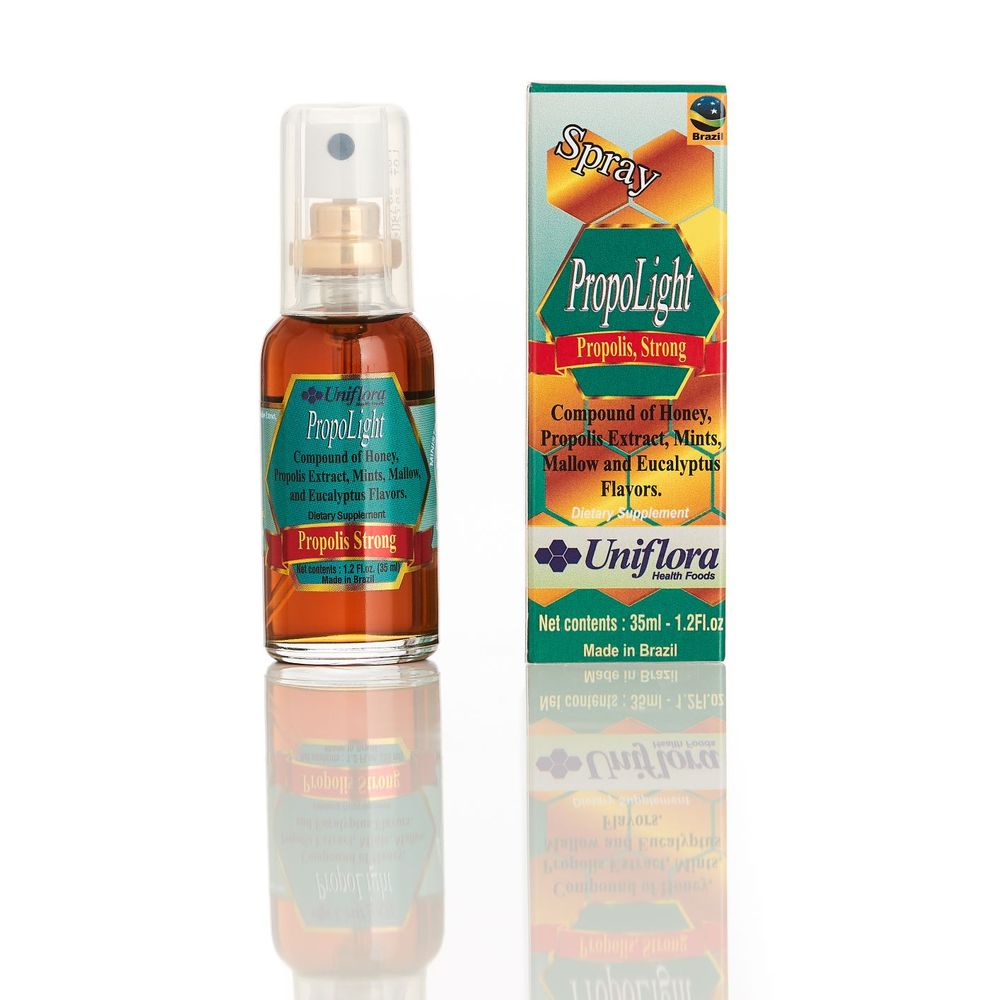Propolis is a resinous and balsamic
substance, it has some coloration and several consistencies, varying to brown
color to dark green. It is produced by the bees from leave sprouts and resinous
exudates of plants, and used inside the beehive " to fix " honey-comb, to
lacquer the alveoli, to close breaches for the reduction of cold wind entrance,
and, mainly, to protect of the natural enemies: fungus and bacteria.
The chemical composition of the propolis depends on the botanical ecology of
each area and by the bee race, but generally, it is compose of 50% of resin and
balm, 30% of wax, 10% of essential and aromatic oils, 5% of pollen and 5% of
several other substances. Until the moment they were already more than 200
chemical compounds identified in the propolis, like the flavonoids, aromatic
acids, terpenoids, aldehydes, alcohols, aliphatic acid and esters, amino acids,
steroids, sugar, etc. The intense studies on propolis reveal that these
compounds are for its several physiologic actions: anti-microbe, anti-inflammatory, healing, anesthetic and antioxidant (it
combats the free radicals).
The Mentha genus comprises about 25 different species from mints, which belong
to the family Labiatae. It is known due its culinary use and of teas with
medicinal effect, and also being known mainly by its flavor and refreshing aroma
characteristic. Uniflora uses the Mentha piperita, also known as mint pepper,
which presents in its composition cineol, limonene, vitamins C and D, terpene,
tannins, flavonoids (mentoside, luteolin, isoroifolina), menthol, cafeic acid,
among other compositions.
This product is the most concentrated spray of our line. Each body has different kinds of response to treatments. Propolight Strong has very high contents of propolis with a mixture of many herbs as Eucalyptus, Lungwort (tanchagem), Mints, Mallow and Plantain (pulmonaria).
Taste is very strong by the mixture of so many plants.
CONSUMER INFORMATION
The Propolight line of products is made from absolutely natural products, which have been developed in a way to give the consumer the most agreeable and refreshing product, easy to utilize and carry around. The products come in an easy-to-carry, practical flask with a spray top, easy to use and in an ideal size for everyone's pocket or handbag, and easily transported anywhere. The variety of plants and flavors gives the consumer a variable choice of product, and thus able to choose the type that is most agreeable to his taste.
RECOMMENDATIONS OF USE
Adult : 3 jets in the mouth
Infant over 1 year old: 1 jet in the mouth
SIDE EFFECTS
There are not concrete reports, but should be attempted for the occurrence of
allergic reactions.
It is not recommended for children under 1 year old.
Brazilian Green Propolis is considered the best of the world.
Read Less




